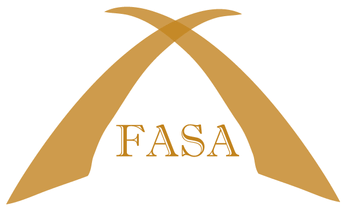Biology and technology: Space Coast Jr./Sr. High students participate in NASA HUNCH program
Experiments traveling to the International Space Station do not all come from professional scientists, some come from an unexpected source: Brevard high school students.
This is all part of the NASA HUNCH program. HUNCH stands for "High Schools United with NASA to Create Hardware." Local students at Space Coast Jr./Sr. High recently participated in the program, defending their projects in Houston. Soon, they could see them fly to the International Space Station.
"Basically, the mission for them is to empower and inspire the students through this project based learning program so the students can learn and apply 21st century skills, and be able to work with real world problems, specifically problems that are submitted by the astronauts that are actually on the ISS," said Luis Reyes, the teacher who helped oversee the project and traveled with the students to Houston.
The school has been taking students to Houston for many years to present final designs of science and technology projects under the NASA HUNCH program.
This year, the school had two teams travel to present, involving six students altogether. Their projects involved ways to keep water clean on the space station, and the creation of a computer game that explored a mission to the ISS. One solo student studied biofilm and a possible way to keep the water clean on the ISS. Another team created a computer game which looked at a mission to the ISS.
Reyes told FLORIDA TODAY that Space Coast Jr./Sr. High focuses on three specialty areas when it comes to these yearly projects: biomedical, technology, and prototyping.
They aren't alone in this endeavor, as NASA provides guidance. NASA HUNCH project manager, Lisa Passarelli, who is an engineer at Kennedy Space Center, visits with the school every other week during the months they are working on the projects.
"Having an engineer from NASA, from the Kennedy Space Center, every other week, that helps a lot," said Reyes. "However, she explained to them that she is an expert in the design and prototyping area. She's not very good with software and biomedical, but they wanted to keep working on those projects. So that means that almost everything that they did came from their own learning, or parents helping them, or that they were looking for people to help."
Reyes added that while he is an engineering teacher, he is not a professional engineer. He was limited in the help he could provide to the students as well.
But he said the students pushed through with their own research and by reaching out to professionals for answers. In a situation where many would get frustrated, the students went the extra mile, and the end result was the projects they presented to NASA.
At the start of the year, 25 different possible projects were presented to the involved students, and it was up to them to decide what they wanted to pursue.
Reyes said Palm Bay Magnet High also participates.
While students do not get paid for their projects, NASA gives students a recognition to add to their portfolio. "That is going to open doors," Reyes said.
To date, the program has flown 3,123 students projects to the ISS, and it is possible that Space Coast's could be next.
When the projects do fly to the space station, they will do so in designated lockers, which the students were able to sign. "The astronauts in the next mission, when they open the lockers they're going to see all the signatures from all the students that were participating in the program," said Reyes.
While the project is over for the school year, there is still one more big event. On April 30, the students who worked on the game will present it to NASA engineers at Kennedy Space Center, alongside students from other schools.
Brooke Edwards is a Space Reporter for Florida Today. Contact her at bedwards@floridatoday.com or on X: @brookeofstars.
